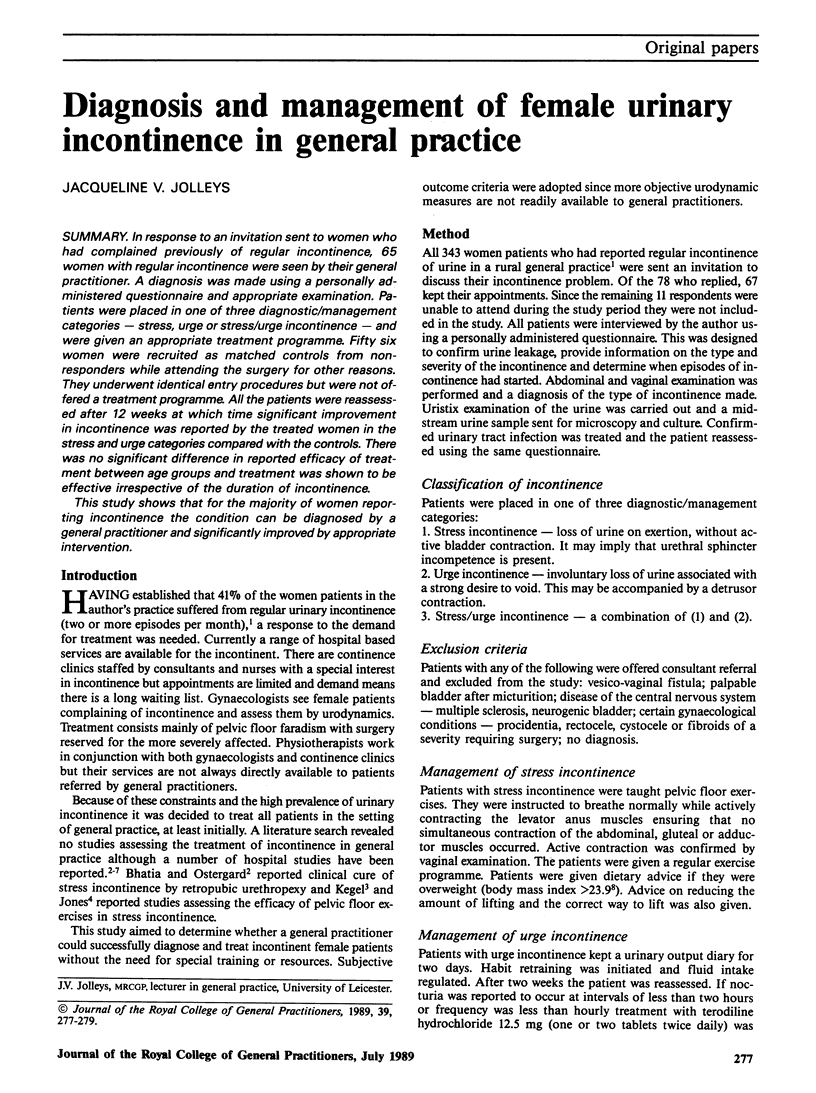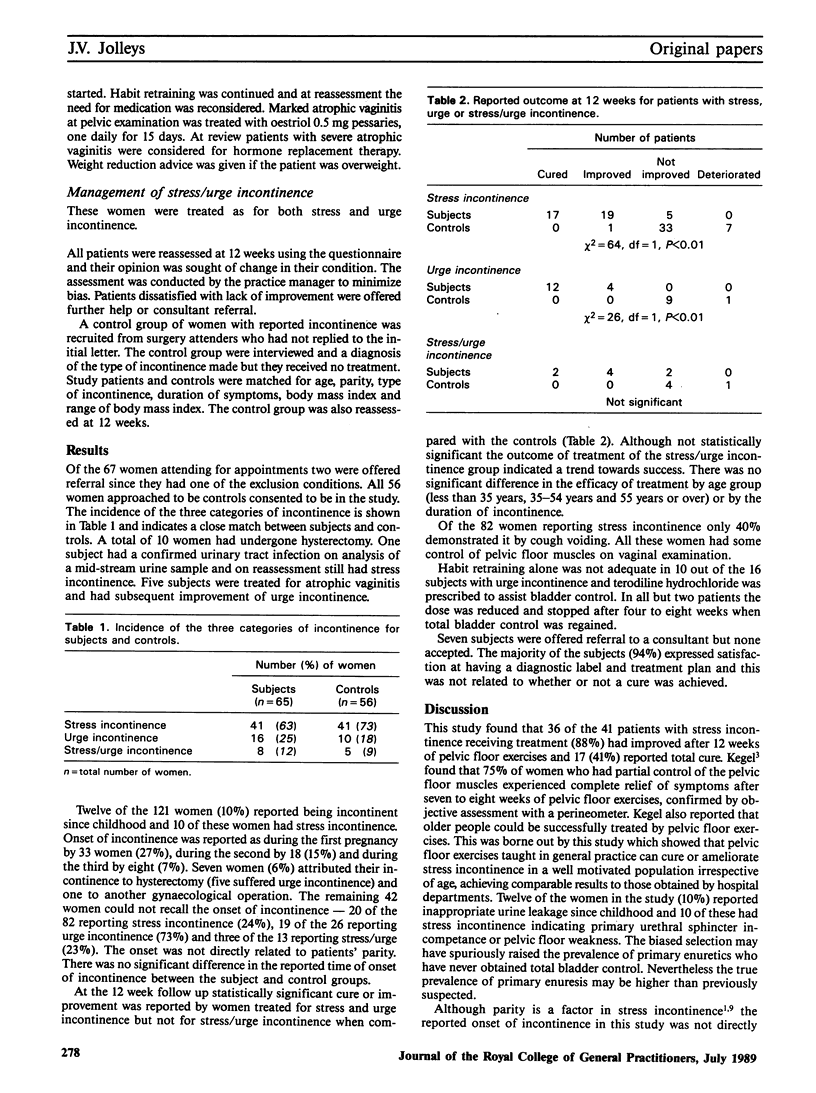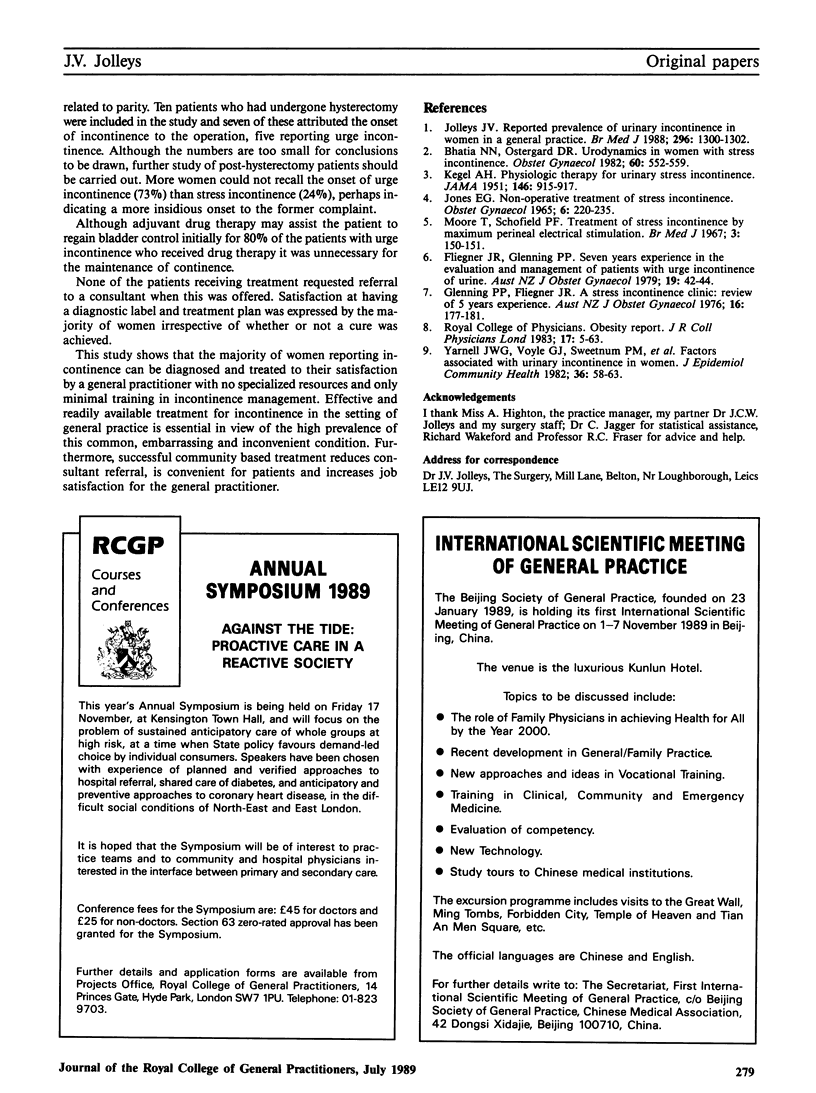Abstract
In response to an invitation sent to women who had complained previously of regular incontinence, 65 women with regular incontinence were seen by their general practitioner. A diagnosis was made using a personally administered questionnaire and appropriate examination. Patients were placed in one of three diagnostic/management categories--stress, urge or stress/urge incontinence--and were given an appropriate treatment programme. Fifty six women were recruited as matched controls from non-responders while attending the surgery for other reasons. They underwent identical entry procedures but were not offered a treatment programme. All the patients were reassessed after 12 weeks at which time significant improvement in incontinence was reported by the treated women in the stress and urge categories compared with the controls. There was no significant difference in reported efficacy of treatment between age groups and treatment was shown to be effective irrespective of the duration of incontinence. This study shows that for the majority of women reporting incontinence the condition can be diagnosed by a general practitioner and significantly improved by appropriate intervention.
Full text
PDF


Selected References
These references are in PubMed. This may not be the complete list of references from this article.
- Bhatia N. N., Ostergard D. R. Urodynamics in women with stress urinary incontinence. Obstet Gynecol. 1982 Nov;60(5):552–559. [PubMed] [Google Scholar]
- Fliegner J. R., Glenning P. P. Seven years experience in the evaluation and management of patients with urge incontinence of urine. Aust N Z J Obstet Gynaecol. 1979 Feb;19(1):42–44. doi: 10.1111/j.1479-828x.1979.tb01351.x. [DOI] [PubMed] [Google Scholar]
- Jolleys J. V. Reported prevalence of urinary incontinence in women in a general practice. Br Med J (Clin Res Ed) 1988 May 7;296(6632):1300–1302. doi: 10.1136/bmj.296.6632.1300. [DOI] [PMC free article] [PubMed] [Google Scholar]
- KEGEL A. H. Physiologic therapy for urinary stress incontinence. J Am Med Assoc. 1951 Jul 7;146(10):915–917. doi: 10.1001/jama.1951.03670100035008. [DOI] [PubMed] [Google Scholar]
- Moore T., Schofield P. F. Treatment of stress incontinence by maximum perineal electrical stimulation. Br Med J. 1967 Jul 15;3(5558):150–151. doi: 10.1136/bmj.3.5558.150. [DOI] [PMC free article] [PubMed] [Google Scholar]
- Yarnell J. W., Voyle G. J., Sweetnam P. M., Milbank J., Richards C. J., Stephenson T. P. Factors associated with urinary incontinence in women. J Epidemiol Community Health. 1982 Mar;36(1):58–63. doi: 10.1136/jech.36.1.58. [DOI] [PMC free article] [PubMed] [Google Scholar]


